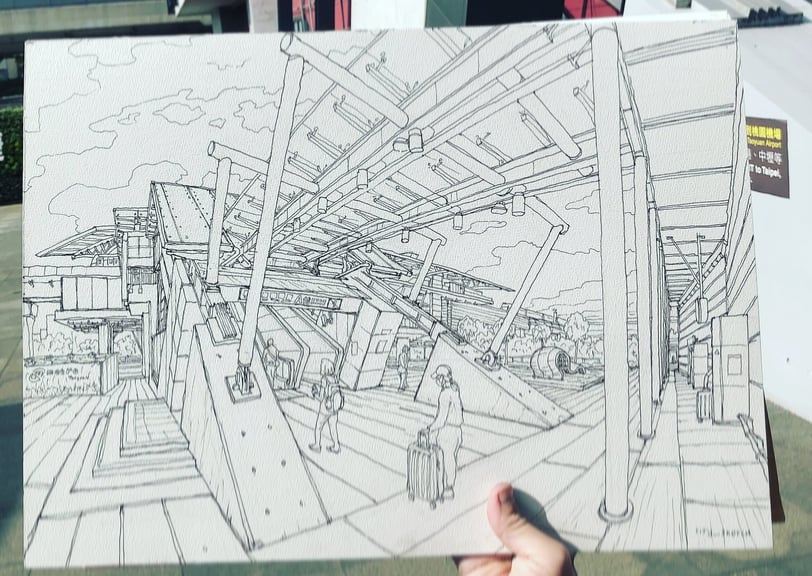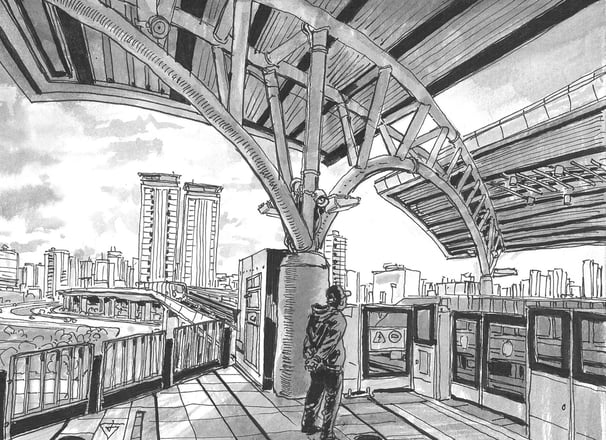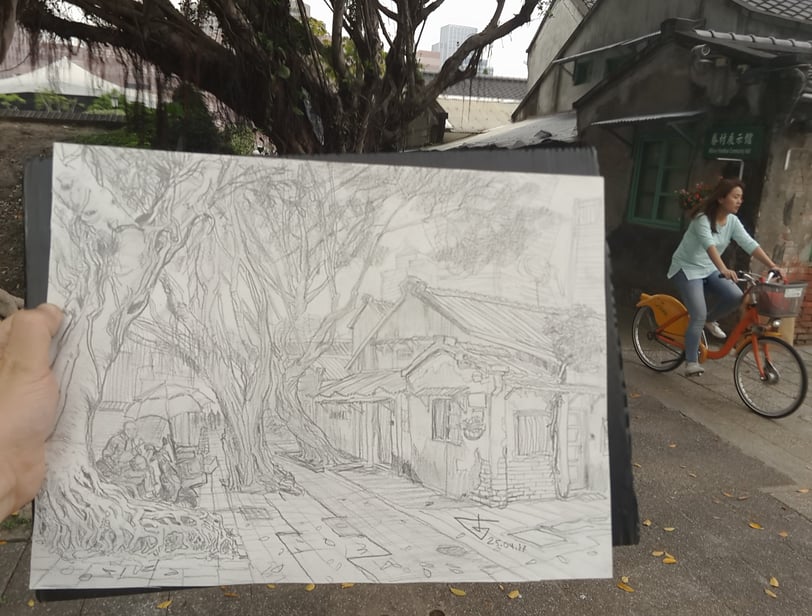The Neuroscience of Urban Sketching: How Evgeny Bondarenko's Art Awakens Our Brains to the Novelty of the Mundane
This article delves into the neuroscience behind our appreciation of Bondarenko's urban sketches, highlighting the unique concepts that set his work apart. I will delve into the unique ways Bondarenko's sketches inspire our brains and expand on some lesser-known concepts in the realm of neuroscience.
EDUCATION
3/29/20234 min read


The Predictive Coding Framework and Urban Sketching
One particularly relevant concept in the neuroscience of perception is the predictive coding framework. This model posits that our brains continuously generate predictions about our environment and update these predictions based on the sensory input we receive. When we encounter unexpected stimuli that contradict our predictions, our brains experience a "prediction error," prompting us to revise our internal models and pay closer attention to the new information.
Bondarenko's urban sketches capitalize on this prediction error phenomenon. By presenting familiar cityscapes in unexpected ways, his art challenges our preconceived notions and engages our brain's natural curiosity. The intricate details, expressive lines, and unusual perspectives in Bondarenko's work invite us to reevaluate our surroundings and appreciate the beauty that can be found in the most ordinary of places.
Cortical Plasticity and the Appreciation of Novelty
Another essential concept in the neuroscience of novelty is cortical plasticity, which refers to the brain's ability to adapt and reorganize itself in response to new experiences. As we explore new environments and engage with novel stimuli, our neural connections are strengthened, fostering cognitive flexibility and resilience.
Bondarenko's urban sketches provide a rich source of novel visual stimuli that can stimulate cortical plasticity. By encouraging viewers to immerse themselves in unfamiliar scenes and observe the world from a fresh perspective, his art fosters a more adaptable and resilient mindset.

The Role of Mirror Neurons in Empathy and Art Appreciation
Bondarenko's urban sketches can also be appreciated through the lens of mirror neurons, a class of brain cells that fire both when we perform an action and when we observe someone else performing the same action. Mirror neurons are thought to play a crucial role in empathy and understanding the intentions of others.
When we observe Bondarenko's sketches, our mirror neurons may activate, enabling us to vicariously experience his creative process and immerse ourselves in the scenes he has captured. This empathic response not only allows us to appreciate his art on a deeper level but also encourages us to see the novelty in our own surroundings and approach the world with analytical curiosity and wonder.




Crossmodal Correspondences: Bondarenko's Multisensory Art Experience
A lesser-known concept within neuroscience is crossmodal correspondences, which refer to the inherent associations our brains make between seemingly unrelated sensory experiences. Evgeny Bondarenko's urban sketches offer a rich multisensory experience, as they seamlessly blend visual elements with the implied sounds, smells, and tactile sensations of the environments he captures. These crossmodal associations engage our brains in a more profound way, as they stimulate various neural pathways and evoke a more vivid and memorable experience of novelty.
Predictive Coding and the Element of Surprise
Another intriguing aspect of Bondarenko's urban sketches is their ability to challenge our brains' predictive coding mechanisms. Predictive coding is a theory that posits our brains constantly generate predictions about the sensory input we are about to receive. When Bondarenko captures unexpected details, compositions, or perspectives in his sketches, he disrupts our predictive coding processes, forcing our brains to recalibrate and adapt. This element of surprise not only delights our senses but also enhances our cognitive flexibility.
The Role of Attention and Mindfulness in Bondarenko's Sketches
Evgeny Bondarenko's urban sketches also serve as an excellent example of the role of attention and mindfulness in the appreciation of novelty. His art demonstrates the power of focused observation and presence, capturing the nuances of cityscapes and street life that often go unnoticed in our fast-paced lives. By concentrating on these details, Bondarenko invites viewers to slow down and pay closer attention to their surroundings, fostering a sense of mindfulness.
Neuroscientific research has shown that practicing mindfulness can have a significant impact on our cognitive and emotional well-being. When we direct our attention to the present moment and fully immerse ourselves in the experience, our brains' default mode network (DMN) – which is typically active during mind-wandering and self-referential thoughts – becomes less active. This shift in neural activity can lead to increased focus, reduced stress, and enhanced emotional regulation.






Synaptic Plasticity and the Novelty of Urban Sketching
The human brain is incredibly adaptable, and one of its most remarkable features is synaptic plasticity – the ability of our neurons to form, strengthen, or weaken connections in response to new experiences. Bondarenko's urban sketches offer viewers a unique opportunity to engage in the process of synaptic plasticity by presenting them with novel visual stimuli.
As we absorb the intricate details and imaginative perspectives of Bondarenko's work, our brains form new neural connections, reinforcing our ability to appreciate the novelty of the mundane. This process not only enhances our cognitive flexibility but also contributes to our overall well-being and happiness.


The Transformative Power of Bondarenko's Urban Sketches
Evgeny Bondarenko's urban sketches offer a unique and powerful example of the beauty of novelty in the mundane, as seen through the lens of neuroscience. His art engages our brains in a myriad of ways, from challenging our predictive coding mechanisms and stimulating crossmodal correspondences to fostering mindfulness and enhancing our social cognition.














